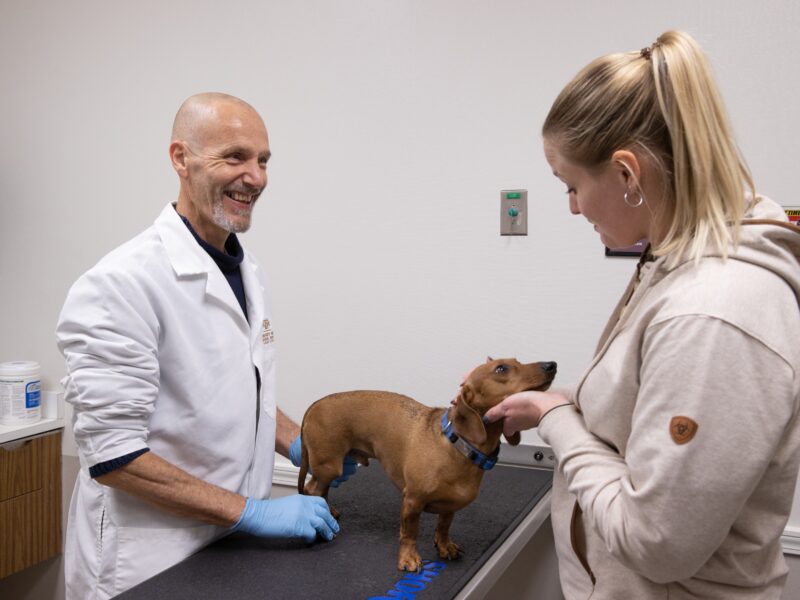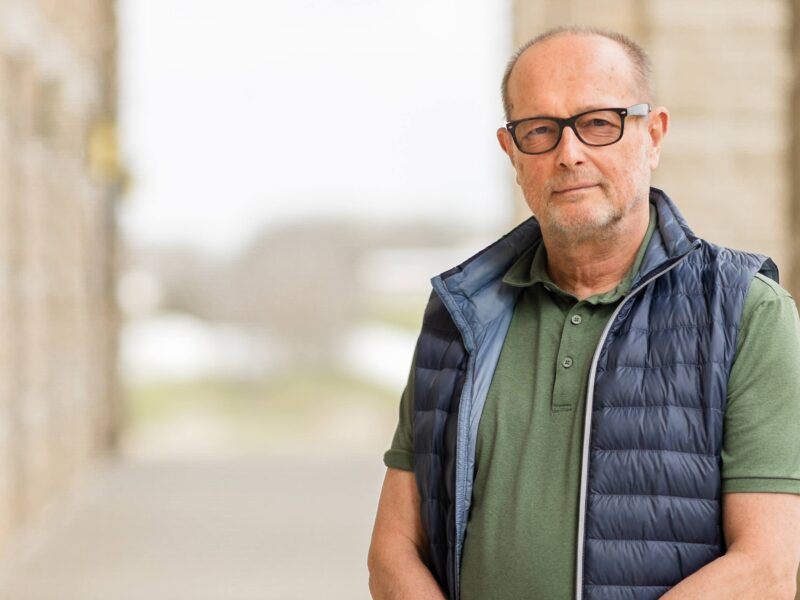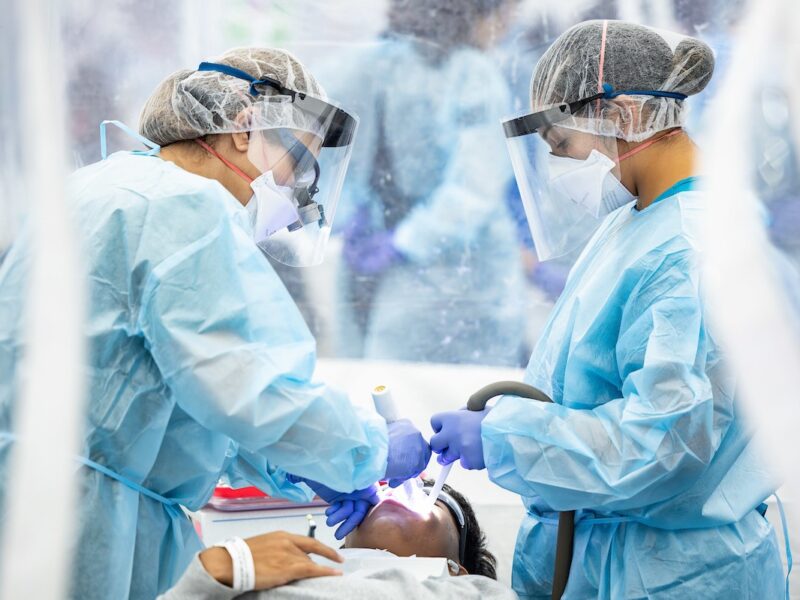Texas A&M Vet Team Treats Baylor Bear Mascot For Benign Tumor
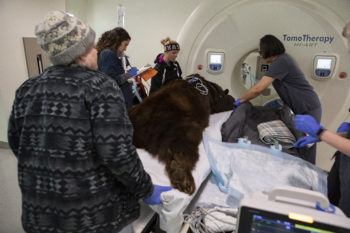
Judge Sue “Lady” Sloan is no ordinary American black bear. In Waco, Lady holds a distinguished role as one of Baylor University’s two live animal mascots.
She also has the luxury of regular veterinary care from zoological specialists at the Texas A&M University College of Veterinary Medicine & Biomedical Sciences’ (CVM) Veterinary Medical Teaching Hospital (VMTH).
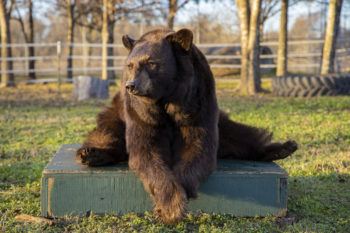
When these veterinary specialists discovered a benign mass called a thymoma in Lady’s chest, they teamed up with other VMTH services to deliver a course of treatment never before used on a bear — stereotactic body radiation therapy using the TomoTherapy system.
This treatment has the potential to completely stop the tumor’s growth while also preserving the 17-year-old bear’s quality of life, which was the utmost goal of both her veterinarians and her care team from Baylor.
Lady was diagnosed with her thymoma this summer when she arrived in College Station for a routine checkup with CVM professor emerita Dr. Sharman Hoppes.
“For a checkup of a large animal like this, we do a full workup including blood work, physical exam under anesthesia and imaging,” said associate professor Dr. J. Jill Heatley, a zoological medicine specialist who joined the case later this summer. “Based on numerous radiographs, we found this mass in the chest. Gwendolyn Levine, one of the radiologists, got a really good sample and one of our clinical pathology specialists told us told us it’s an epithelial inclusive thymoma.”
When plans for treatment began, Heatley recruited Dr. Lauren Smith, CVM clinical assistant professor and radiation oncologist, to figure out the best way to deliver precise, effective treatment to Lady’s tumor, which was already larger than a softball.
Only two other cases of thymomas in bears exist in veterinary literature, one of which was found after the bear had died. The other was only found after the bear began showing signs that something was wrong.
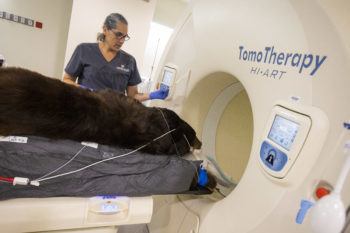
“The good news for Lady is that she’s completely asymptomatic; she has no clinical signs of the mass, which means that we caught it early,” Smith said. “Early detection is key with cancer. Being able to intervene at an early point is why we have a very positive outlook for her.”
They decided that Lady’s best treatment option was stereotactic body radiation therapy, which uses many beams of high-energy photons to deliver large doses of radiation to the tumor and spare surrounding tissues.
Although there is no record of this form of treatment ever being used on a bear, Smith said it was a good patient-based treatment option because it allowed Lady to go home between treatments and avoid complications, side effects, or risks associated with surgery.
“This treatment plan allows Lady to spend as little time in the hospital as possible and keeps her quality of life first, as well as gives her the best chance moving forward,” Smith said.
To apply this form of radiation therapy, Lady was anesthetized and placed inside the TomoTherapy system, a unique technology that is only used at one other veterinary hospital in the world.
“What makes TomoTherapy unique is that we treat these tumors in a slice-by-slice fashion,” Smith said. “We get millions of opportunities to get a dose into the tumor while avoiding normal tissues; it allows us to have much better and more conformal plans and much tighter doses of distributions to the tumor itself. Where TomoTherapy shines in cancer treatment across the world is treating tumors with complex shapes and geometries.
“Lady’s tumor is sitting right up in front of the heart and between the lungs, so we’re trying to get really high ablative doses to kill this tumor while it’s sitting in between those fairly sensitive, important structures,” she said. “TomoTherapy allows us that opportunity to still treat aggressively with these cancers while maintaining good quality of life. This is probably the first large exotic animal treated with TomoTherapy.”
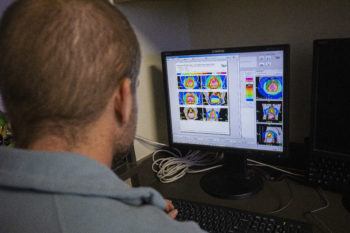
TomoTherapy offers another benefit in that it has onboard CT imaging capabilities; during Lady’s three doses of treatment, the CT scanner was used to make sure she was in the same position every day.
During her treatments, Lady was accompanied and supported by Baylor students in the Baylor Bear Program and Dakota Farquhar-Caddell, associate director of student activities and the Robert L. Reid Director of the Baylor Chamber of Commerce.
“We are really lucky to be this close to Texas A&M,” Farquhar-Caddell said. “The care has been exceptional. I have direct contact with many of the staff on a daily basis. They reach out to me after we get home, checking in on how Lady is doing. We’ve had great communication and conversation with them and we’re really thankful.”
With her three radiation doses now complete, Lady has returned home to the Bill and Eva Williams Bear Habitat in Waco, a U.S. Department of Agriculture Certified Class C Zoo facility that provides Lady and her sister, Joy, with a natural environment full of enrichment.
“Joy and Lady are a beloved part of our community, and we’re just really grateful that we have excellent care and access to resources and the ability to care for them well,” Farquhar-Caddell said. “In some ways we see our bears as ambassadors for other American black bears. They have probably the largest platform any black bear has in the country, so we use it to educate the community and for important conservation efforts.”
By focusing on her quality of life and finding an innovative way to treat her thymoma, Lady’s veterinarians and Baylor care team have taken a monumental step forward in the veterinary care of large exotic animals.
This story by Megan Myers originally appeared on the College of Veterinary Medicine & Biomedical Science website.
Media contact: Jennifer Gauntt, 979-862-4216, jgauntt@cvm.tamu.edu.
